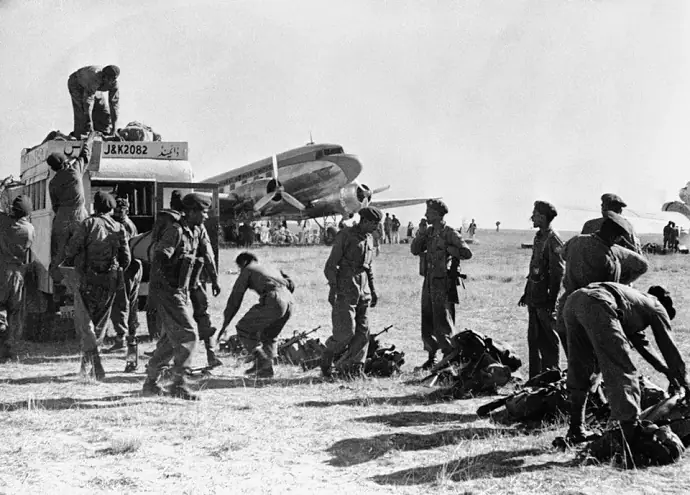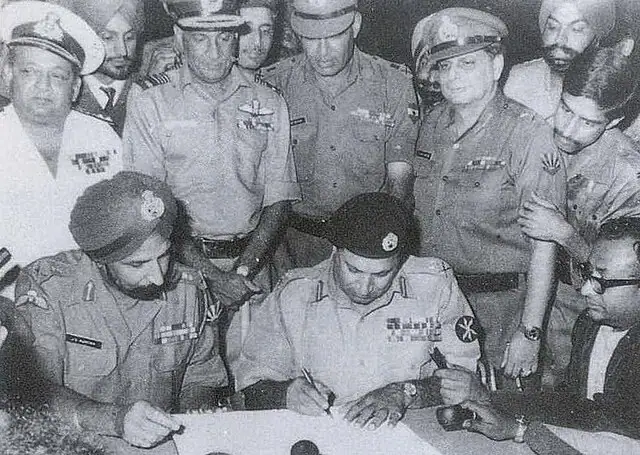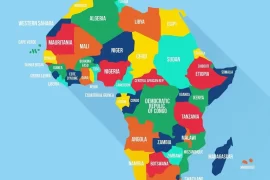The India-Pakistan rivalry, rooted in the 1947 partition of British India, has led to several wars and conflicts, primarily over the disputed Kashmir region. Since their independence, the two nuclear-armed neighbors have engaged in four major wars (1947-48, 1965, 1971, and 1999) and numerous skirmishes, with both sides often claiming victory. This article examines each conflict to determine who truly won the India-Pakistan wars, analyzing military outcomes, territorial gains, and long-term impacts. By breaking down the historical context, key events, and results, we aim to provide a clear and comprehensive understanding of these conflicts.
Historical Context of India-Pakistan Wars
The partition of British India in 1947 created two nations: Hindu-majority India and Muslim-majority Pakistan. The princely state of Jammu and Kashmir, with a Muslim-majority population but a Hindu ruler, Maharaja Hari Singh, became a focal point of contention. Singh initially sought independence but acceded to India after an invasion by Pakistani-backed tribal militias, sparking the first war. Subsequent conflicts, often fueled by the Kashmir dispute, cross-border terrorism, and geopolitical tensions, have shaped the volatile relationship between the two nations. Both countries became nuclear powers—India in 1974 and Pakistan in 1998—raising the stakes of their confrontations.
The Four Major India-Pakistan Wars: Who Won?
1. First Kashmir War (1947-1948): A Stalemate with Strategic Gains for India
- Background: The war began in October 1947 when Pakistani tribal militias, supported by regular Pakistani soldiers, invaded Kashmir to seize control. Maharaja Hari Singh signed the Instrument of Accession, joining India in exchange for military aid.

- Key Events: Indian forces airlifted troops to Srinagar, pushing back the invaders. Fighting continued through 1948, with both sides gaining and losing ground.
- Outcome: A UN-mediated ceasefire on January 1, 1949, established the Line of Control (LoC). India retained control of two-thirds of Kashmir (Jammu, Kashmir Valley, and Ladakh), while Pakistan held one-third (Azad Kashmir and Gilgit-Baltistan).
- Who Won?: The war ended in a stalemate, as neither side achieved its ultimate goal of controlling all of Kashmir. However, India gained a strategic edge by securing the more populous and resource-rich areas, including the Kashmir Valley. Pakistan’s failure to capture Srinagar and the Maharaja’s accession to India tilted the political outcome in India’s favor.
2. Indo-Pakistani War of 1965: India’s Tactical Victory
- Background: The second war erupted in August 1965 after Pakistan launched Operation Gibraltar, infiltrating forces into Indian-administered Kashmir to incite an insurgency. India retaliated with a full-scale military offensive.

- Key Events: The war saw intense battles, including the largest tank battle since World War II at Asal Uttar, where India decimated Pakistani armored units. India advanced toward Lahore, capturing 1,900 km² of Pakistani territory, while Pakistan gained 540 km² of Indian land.
- Outcome: A UN-brokered ceasefire on September 22, 1965, ended the 17-day war. The Tashkent Agreement, mediated by the Soviet Union, restored pre-war boundaries, with both sides returning captured territories.
- Who Won?: India held the upper hand militarily, repelling Pakistan’s infiltration and advancing close to Lahore. Pakistan’s objective to wrest Kashmir failed, and its territorial gains were marginal compared to India’s. Analysts like Arif Jamal and Devin T. Hagerty note India’s decisive tactical victory, despite both nations claiming success. Pakistan’s narrative of victory was later constructed to shield its leadership from criticism, but the military outcome favored India.
3. Indo-Pakistani War of 1971: India’s Decisive Victory and the Birth of Bangladesh
- Background: Unlike prior conflicts, this war was not centered on Kashmir but on East Pakistan (now Bangladesh). Political tensions between West and East Pakistan escalated after the 1970 elections, where the East Pakistani Awami League, led by Sheikh Mujibur Rahman, won a majority. West Pakistan’s refusal to cede power led to a brutal military crackdown, triggering a humanitarian crisis.

- Key Events: India supported the Bengali independence movement, training Mukti Bahini guerrillas. On December 3, 1971, Pakistan launched pre-emptive airstrikes on Indian airbases (Operation Chengiz Khan), prompting India to declare war. Indian forces launched a multi-front offensive, capturing Dhaka within 13 days.
- Outcome: On December 16, 1971, over 90,000 Pakistani troops surrendered—the largest military surrender since World War II. Bangladesh emerged as an independent nation, and India captured 15,010 km² of Pakistani territory in the west (later returned under the 1972 Simla Agreement).
- Who Won?: India achieved a resounding victory, both militarily and politically. Pakistan’s military was devastated, losing half its navy, a quarter of its air force, and a third of its army, as noted by Pakistani author F.S. Aijazuddin. The creation of Bangladesh reshaped South Asia’s geopolitical landscape, cementing India’s regional dominance. Pakistan’s defeat was undeniable, despite later attempts to downplay the loss.
4. Kargil War (1999): India Reclaims Territory
- Background: In May 1999, Pakistani troops and militants infiltrated Indian-administered Kashmir, occupying strategic heights in the Kargil sector. This occurred shortly after both nations tested nuclear weapons in 1998, heightening global concerns.

- Key Events: Indian forces launched Operation Vijay, recapturing key positions like Tiger Hill and Point 4875 after intense battles in high-altitude terrain. The conflict lasted from May to July 1999.
- Outcome: Pakistan withdrew under international pressure, particularly from the U.S., after failing to hold its positions. India regained all occupied territories, suffering 527 casualties, while Pakistan lost an estimated 700-1,000 soldiers.
- Who Won?: India emerged victorious, restoring the pre-conflict status quo and exposing Pakistan’s role in the infiltration. Pakistan’s withdrawal and failure to achieve its strategic objectives marked a clear defeat, despite its initial tactical advantage.
Other Conflicts and Skirmishes
Beyond the four major wars, India and Pakistan have engaged in several limited conflicts:
- Siachen Conflict (1984-2003): India gained control of the Siachen Glacier, the world’s highest battlefield, after Pakistan attempted to occupy it. India’s Operation Meghdoot secured the region, which it holds to this day.
- 2001-2002 Standoff: Following the attack on the Indian Parliament, both nations mobilized troops along the border. Diplomatic efforts de-escalated the crisis, with no clear victor.
- Surgical Strikes (2016 and 2019): India conducted retaliatory strikes across the LoC after terrorist attacks in Uri (2016) and Pulwama (2019). The 2019 Balakot airstrike targeted militant camps in Pakistan, escalating tensions but not leading to full-scale war. Outcomes remain disputed, with India claiming success and Pakistan denying significant damage.
- Pahalgam Attack and Fallout (2025): On April 22, 2025, a terrorist attack in Baisaran Valley near Pahalgam, Jammu and Kashmir, killed 27 civilians—25 Hindu tourists, one Christian tourist, and one local Muslim—and injured over 20 others. The Resistance Front (TRF), allegedly linked to Pakistan-based Lashkar-e-Taiba, initially claimed responsibility, citing opposition to non-local settlement in Kashmir post-Article 370 revocation, but later retracted the claim. Indian authorities accused Pakistan’s Inter-Services Intelligence (ISI) of orchestrating the attack through senior Lashkar operatives. The attack, the deadliest on civilians in India since the 2008 Mumbai attacks, sparked widespread outrage. On April 23, India suspended the Indus Waters Treaty, closed key border crossings, expelled Pakistani diplomats, and banned Pakistani airlines from its airspace, escalating diplomatic tensions. Pakistan denied involvement, called for an international inquiry, and retaliated by suspending the Simla Agreement and cutting trade ties.
On May 7, India launched Operation Sindoor, striking nine targets in Pakistan and Pakistan-occupied Kashmir (PoJK), deliberately avoiding Pakistani military targets to limit escalation. Pakistan countered with missile strikes on Indian cities. The conflict, lasting nearly 100 hours, saw drone warfare, artillery exchanges, and cyberattacks, pushing the nuclear-armed neighbors toward the brink of war.
A U.S.-mediated ceasefire, facilitated by President Donald Trump after overnight talks, was announced on May 10, 2025, effective from 5:00 PM IST, with both nations agreeing to halt hostilities.
Assessing the Overall Winner: India’s Dominance
- Military Outcomes: India won decisively in 1971 and 1999, achieved a tactical victory in 1965, and secured more territory in 1947-48. Pakistan failed to achieve its primary objective—control of Kashmir—in any war.
- Territorial Control: India controls two-thirds of Kashmir, including the strategically vital Siachen Glacier, while Pakistan holds one-third. India’s territorial gains in 1971 were returned as a goodwill gesture, but the creation of Bangladesh was a permanent loss for Pakistan.
- Geopolitical Impact: The 1971 war established India as a regional power, while Pakistan’s military and political standing weakened. The Kargil War further isolated Pakistan internationally, as its role in the conflict drew global criticism.
- Nuclear Factor: Both nations’ nuclear capabilities since 1998 have deterred full-scale wars, but India’s stronger conventional forces and global alliances give it an edge in limited conflicts.
Why the Debate Persists
Both nations claim victories due to differing narratives:
- India’s Perspective: India emphasizes its military successes, territorial control, and the creation of Bangladesh as evidence of its dominance.
- Pakistan’s Perspective: Pakistan highlights its resilience, such as retaining parts of Kashmir in 1947-48, and portrays conflicts like 1965 as defensive victories. Posts on X reflect this sentiment, with some users claiming Pakistan’s “smart, peaceful strategy” in recent escalations.
- Propaganda and Nationalism: Both countries use state-controlled narratives to bolster national pride. For example, Pakistan’s Inter-Services Public Relations produced a book on the 1965 war that omits its failed operations, while India celebrates the 1971 surrender as a defining moment.
Conclusion: Who Won the India-Pakistan Wars?
India has won the majority of its wars against Pakistan, with clear victories in 1971 and 1999, a tactical edge in 1965, and a strategic advantage in 1947-48. Pakistan’s inability to secure Kashmir and its significant losses—particularly in 1971—underscore India’s dominance. However, the unresolved Kashmir dispute and ongoing tensions, as seen in recent escalations like the 2025 drone war, highlight the enduring nature of this rivalry. As nuclear powers, both nations must prioritize diplomacy to avoid catastrophic escalation. Share your thoughts on this historical rivalry in the comments below.
Key Facts : Who Won the India-Pakistan Wars?
War | Years | Winner | Key Outcome |
|---|---|---|---|
First Kashmir War | 1947-1948 | Stalemate | India controlled 2/3 of Kashmir |
Indo-Pak War | 1965 | India | India repelled Pakistan’s invasion |
Indo-Pak War | 1971 | India | Bangladesh created, 90,000 Pakistanis surrendered |
Kargil War | 1999 | India | India recaptured Kargil heights |
FAQs
1. How many wars have India and Pakistan fought?
India and Pakistan have fought four major wars: 1947-48, 1965, 1971, and 1999, along with several skirmishes and standoffs.
2. Who won the 1971 India-Pakistan War?
India won decisively, leading to the creation of Bangladesh and the surrender of over 90,000 Pakistani troops.
3. What was the outcome of the Kargil War?
India regained all territories occupied by Pakistani forces, achieving a clear victory in 1999.
4. Why do India and Pakistan claim victory in the 1965 war?
India repelled Pakistan’s infiltration and captured more territory, but Pakistan constructed a narrative of defensive success to shield its leadership.
5. Are India and Pakistan still in conflict?
Yes, tensions persist, particularly over Kashmir, with recent escalations like the 2025 drone war highlighting the ongoing rivalry.







